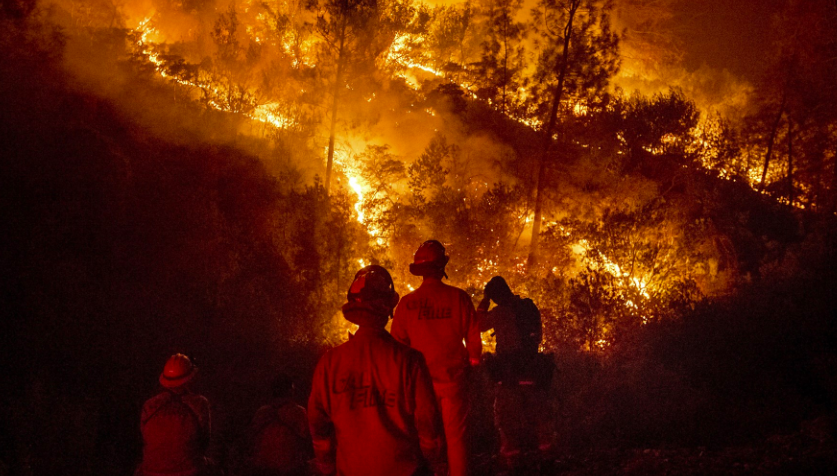
Firefighters near Ladoga, California in August 2018. Photo: Noah Berger, AP
Bloomberg News reported yesterday that California’s largest utility, PG&E, has a plan to cut off power on high-wind days during the onrushing wildfire season because it the main cause of wildfires last year was power lines that were knocked down by high winds and the sparks from the live wires. And most residents don’t know and/or are not ready for the debilitating impacts. Governor Newsome is so concerned about the impacts of the blackouts that he has created a fund to help communities prepare.
- Last fall, PG&E cut power the power for nearly two days in the town of Calistoga, California due to fire risk, plunging the town into darkness and leaving streetlights dark and gas pumps frozen and assisted living facilities without power — at the time, hardly anyone in the town had a backup generator.
- The last eighteen months have seen 6 of the 10 most destructive and deadly wildfires in California history, that are responsible for killing 123 people and shutting down major sections of the state’s electrical grid plunging millions into darkness.
- Fire season runs from June to December — nearly half the year — and is made much worse by strong winds that make the fires spread more quickly too.
PG&E is hoping to be able to provide two days warning about a blackout and has begun a campaign to educate the public that includes sending letters to customers and working to identify vulnerable residents such as senior citizens and people with health issues requiring electricity. In some cases, it will take more than a day to turn the power back on once the winds subside, meaning the blackouts could last for as much as a week. PG&E plans to set up dozens of so-called “resiliency centers,” so communities can request generators be brought in to run essential services during blackouts.
Why This Matters: As the folks in California are learning the hard way, this is the new normal unless we radically upgrade our energy systems. What this clearly shows is that climate change is a problem and that without more fundamental changes, even the mitigation for climate will be difficult. Homeowners who can afford it are beginning to install a solar panel and battery combination to keep the power going during outages. PG&E has an estimated $30 billion or more in claims against it from the wildfires of the last two years, which caused the company to file for bankruptcy last January. In order to manage these risks, PG&E said earlier this year it must widen the scope of its power shutoffs to include high-transmission power lines, potentially impacting nearly 10 times the number of customers compared to an earlier plan.
To Go Deeper: This story from GreenTech Media about the PG&E wildfire plan is worthy of your time. And check out the state’s interactive wildfire map.
May 13, 2019 » battery, blackout, energy, generators, PG&E, resilience, Solar, wildfire


